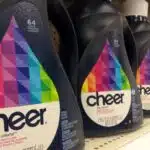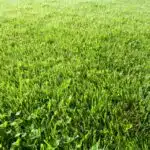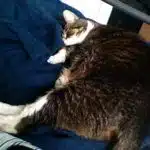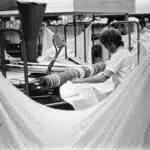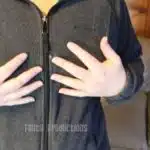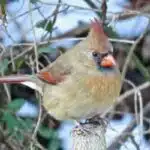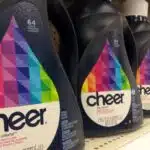Cloth diapering is a fantastic way of reducing your carbon footprint while ensuring that your baby stays comfortable and healthy. However, washing cloth diapers can be daunting for many parents who are new to this practice. It is essential to know the right techniques and steps to follow to ensure that the diapers are clean, sanitized, and free of any bacteria or odor.
As a cloth diapering expert, I have helped numerous parents navigate through the process of washing cloth diapers. In this article, I will share with you five simple steps that will make washing your cloth diapers an easy and stress-free experience. These steps will not only save you time and money but also ensure that your baby’s sensitive skin is well taken care of. So, get ready to learn how to wash cloth diapers like a pro!
Choosing The Right Cloth Diapers For Your Baby
As a cloth diapering expert, it is important to choose the right cloth diapers for your baby. Eco friendly options are becoming increasingly popular among parents who are concerned about the environment and their baby’s health. Cloth diapers not only reduce the amount of waste going into landfills but also provide an economical option for families.
When choosing cloth diapers, consider the cost comparison between different options such as prefolds, fitteds, and all-in-ones. Prefolds are usually the least expensive option, but require additional covers. Fitteds and all-in-ones are more costly but require less preparation time before use. It is important to note that while cloth diapers have a higher upfront cost than disposables, they can save families thousands of dollars in the long run.
By choosing eco-friendly options and considering cost comparisons, you can find the perfect cloth diaper for your baby. In the subsequent section, we will discuss how to properly prep your cloth diapers for washing to ensure optimal cleanliness and longevity.
Prepping Your Cloth Diapers For Washing
Prepping your cloth diapers for washing is an essential step in keeping them clean and hygienic for your baby’s use. Before tossing them into the washer, there are a few things that you need to do to ensure that they come out looking and smelling fresh.
Firstly, consider using pre-washing methods. This involves rinsing or soaking the cloth diapers before washing them to remove any excess waste. Pre-washing can help to reduce staining and also make the cleaning process more efficient. There are different pre-washing methods you can use, including cold water rinse, hot water soak, or adding a special laundry booster to the wash cycle.
Secondly, make sure that you store your cloth diapers correctly until it’s time to wash them. Cloth diaper storage should be in a dry and well-ventilated area, away from direct sunlight. You can choose to use a wet bag or a diaper pail with a lid that seals tightly to prevent odors from escaping. Ensure that you wash your storage container regularly with soap and water to prevent bacterial buildup.
Lastly, remember not to overstuff your washer when washing your cloth diapers as this can lead to poor cleaning results or damage to your machine. Consider grouping your diaper loads by size or type of diaper material, such as all-in-ones or prefolds. Also, avoid using fabric softeners as they can affect the absorbency of the diapers.
Moving on from prepping your cloth diapers for washing, dealing with diaper stains is another crucial aspect of cloth diaper care.
Dealing With Diaper Stains
- Cloth diapers should be treated promptly to remove stains efficiently. Soaking the diaper in a mild solution of water and detergent can be an effective way to loosen and remove stains.
- Pre-treating stains with a specially formulated cloth diaper detergent can also help to remove stubborn stains.
- Hot water can be used for pre-soaking and washing, but caution should be taken in regards to temperature settings and fabric types.
- For the most effective results, a combination of different methods should be used to remove diaper stains.
Removing Stains
As a cloth diapering expert, one of the most common concerns among parents is dealing with diaper stains. While it may seem daunting to remove these stubborn stains, there are natural stain removers that can help prevent and eliminate them.
Preventing diaper stains begins with proper maintenance of the diapers. This includes rinsing them immediately after use and soaking them in cold water before washing. For particularly tough stains, adding a cup of white vinegar or baking soda to the soak can also be effective. Additionally, avoiding the use of fabric softeners and dryer sheets can prevent buildup that can lead to staining.
If stains do occur, there are natural stain removers that can be used before washing. Lemon juice and sunlight are both effective for removing stains on white diapers, while hydrogen peroxide or oxygen bleach can be used on colored fabrics. Simply apply the remover directly to the stain and let sit for 15-30 minutes before washing as usual.
With these tips in mind, dealing with diaper stains doesn’t have to be a stressful task for cloth diapering parents. By taking preventative measures and utilizing natural stain removers when necessary, your cloth diapers will stay clean and fresh for your little one’s next use.
Soaking Stains
As a cloth diapering expert, dealing with diaper stains is a common concern among parents. While there are DIY stain removers available, it’s important to take preventive measures to avoid staining in the first place. One of the most effective methods is soaking stains using natural solutions.
Soaking stains is an essential step in maintaining cloth diapers. A natural soaking solution can help prevent stubborn stains from setting into the fabric. Using cold water and adding a cup of white vinegar or baking soda to the soak can effectively remove dirt and odor from the diapers. For particularly tough stains, a solution of hydrogen peroxide and water can also be used.
In addition to preventing stains, soaking can also help eliminate existing ones. Soaking stained diapers for 24 hours before washing can significantly improve their appearance. With these natural soaking solutions, parents can maintain their cloth diapers with ease and confidence.
Sorting Your Diapers For Washing
As a cloth diapering expert, I highly recommend sorting your diapers properly before washing them. Not only will this ensure that your diapers last longer, but it also helps you wash them more efficiently. There are different sorting methods to choose from, and each one depends on your needs and preferences.
One of the most common sorting methods is by type of diaper, such as all-in-ones, pockets, prefolds, or flats. This method allows you to adjust the wash cycle and detergent based on the type of diaper you have. Another sorting method is by level of soiling – heavy soiled, medium soiled, and lightly soiled. It’s essential to separate heavily soiled diapers from lightly soiled ones to avoid cross-contamination during washing. Lastly, some parents prefer to sort their diapers by color or pattern for aesthetic purposes.
Once you’ve sorted your diapers, it’s time to store them until laundry day. There are many storage solutions available depending on your space and budget. Some popular options include hanging wet bags or pails with lids. Wet bags are ideal for storing dirty diapers while traveling since they’re compact and easy to carry around. Pails with lids are perfect for home use since they can hold more diapers without emitting unpleasant odors.
By using these sorting methods and storage solutions, you can streamline your cloth diaper washing routine while keeping your baby’s bottom clean and comfortable. In the next section, we will discuss the importance of using the right water temperature when washing cloth diapers to achieve optimal cleanliness and sanitation results in every wash cycle.
Using The Right Water Temperature
When it comes to washing cloth diapers, using the proper water temperature is crucial. You want to make sure that your baby’s diapers are thoroughly cleaned and sanitized without damaging them in the process. Using cold water can be an effective way to wash cloth diapers as it prevents shrinkage, fading, and damage to the elastic.
However, if you have hard water problems in your area, using cold water alone may not be enough. Hard water can cause mineral buildup on your cloth diapers, which can lead to odor issues and decreased absorbency. To combat this problem, you may need to incorporate hot or warm water into your washing routine.
Here are some tips for using the right water temperature when washing cloth diapers:
- Use cold water for pre-rinses and first washes
- Add a softener or laundry booster designed for hard water if needed
- Consider adding a hot or warm wash cycle if you have hard water problems
- Check your diaper manufacturer’s recommendations for recommended washing temperatures
- Test different temperatures until you find what works best for your specific situation
Selecting the right detergent is also an important part of washing cloth diapers effectively. By following these tips and experimenting with different techniques, you can ensure that your baby’s cloth diapers stay clean and fresh without causing any damage or irritation.
Selecting The Right Detergent
When it comes to selecting the right detergent for washing your cloth diapers, there are a few things to keep in mind. First and foremost, you want to choose an eco-friendly detergent that is gentle on both your baby’s skin and the environment. Look for detergents that are free from harsh chemicals such as chlorine, phosphates, and synthetic fragrances.
It’s also important to compare the effectiveness of different detergents. Some detergents may claim to be specifically designed for cloth diapers but still fail to effectively remove stains and odors. It’s worth doing some research and reading reviews from other cloth diapering parents to find a detergent that works well for your specific needs.
When selecting a detergent, keep in mind that more isn’t always better. Using too much detergent can lead to buildup on your diapers, which can cause them to become less absorbent over time. Follow the recommended usage guidelines on the packaging and consider using a cloth diaper safe laundry booster if needed.
Moving forward, it’s important to avoid fabric softeners and bleach when washing your cloth diapers. These products can cause damage to the fibers of your diapers and reduce their absorbency over time. Instead, opt for natural alternatives such as vinegar or wool dryer balls to help soften your diapers without causing harm.
Avoiding Fabric Softeners And Bleach
As a cloth diapering expert, it is important to educate parents about the negative effects of using fabric softeners and bleach when washing cloth diapers. Fabric softeners coat the fibers of the diapers, reducing their absorbency and creating a barrier that can cause buildup, leading to leaks and odors. Bleach can weaken the fibers, causing them to break down faster and shortening the lifespan of the diapers.
Fortunately, there are alternatives to bleach that are both safe for your baby and effective in sanitizing your cloth diapers. Oxygen-based cleaners such as hydrogen peroxide or OxiClean can be used as a substitute for bleach. They work by releasing oxygen into the water to lift stains and kill bacteria without damaging the fabric. It is important to follow the manufacturer’s instructions when using these products.
Natural fabric softeners such as vinegar or baking soda can also be used instead of traditional fabric softeners. Vinegar acts as a natural fabric softener while also helping to remove any lingering odors from your cloth diapers. Baking soda has a similar effect but is also known for its ability to neutralize acidity and balance pH levels in water, which can help prevent mineral buildup in hard water areas. By avoiding harsh chemicals like bleach and fabric softeners, you can extend the life of your cloth diapers while keeping them clean and safe for your baby.
When it comes to washing cloth diapers, using the right wash cycle is essential for maintaining their integrity over time. In the next section, we will discuss how to choose the right wash cycle based on your machine’s capabilities and how heavily soiled your diapers are.
Using The Right Wash Cycle
When it comes to cloth diapering, choosing the right wash cycle is essential in order to maintain the integrity of the fabric. It is important to select a cycle that is gentle enough to avoid damage and still cleans the diapers effectively. Temperature settings are also important, as too hot of a setting can cause damage to the fabric, and too cold of a setting may not adequately clean the diapers. As a general rule of thumb, warm water settings are recommended for washing cloth diapers.
Choosing The Right Wash Cycle
Choosing the right wash cycle is crucial in ensuring that your cloth diapers are free from any dirt and residue. The first factor to consider is the water hardness of your area. Hard water can cause mineral buildup, making it difficult for detergent to work effectively. If you have hard water, it is recommended to add a water softener or use a special detergent formulated for hard water.
Time management also plays a significant role in choosing the right wash cycle. For busy parents, a quick wash cycle may seem like a time-saving option, but it may not be enough to completely clean soiled diapers. It is important to choose a wash cycle that allows enough time for agitation and rinse cycles.
Ultimately, the best wash cycle will depend on your washing machine’s capabilities and the type of detergent you use. Experiment with different settings until you find one that works best for your specific situation. Remember to regularly check for any build-up or residue and adjust accordingly. By taking the time to choose the right wash cycle, you can ensure that your cloth diapers are thoroughly cleaned and ready for your baby’s next use.
Temperature Settings
When it comes to washing cloth diapers, the right wash cycle can make all the difference in ensuring that your baby’s diapers are clean and free from any residue or buildup. One important factor to consider is adjusting the temperature settings of your washing machine. Different temperature settings can have varying effects on how well your detergent works and how thoroughly your diapers are cleaned.
The water hardness of your area can also have an impact on the effectiveness of different temperature settings. Hard water can cause mineral buildup, making it more difficult for detergent to work effectively. Adjusting the temperature settings may help counteract this issue by allowing for better penetration of detergent into the fabric. However, it is important to note that higher temperatures may not always be necessary and could potentially damage certain types of cloth diapers.
Ultimately, finding the right temperature setting will depend on a variety of factors, including your specific washing machine and the type of detergent you use. Experimenting with different settings and regularly checking for any build-up or residue can help you determine which temperature setting works best for your situation. By taking these steps, you can ensure that your cloth diapers are thoroughly cleaned and ready for use time and time again.
Adding Extra Rinses For Cleaner Diapers
Using the Right Wash Cycle is crucial for effectively cleaning your cloth diapers. However, there are times when you may need to take Extra Rinses to ensure that your diapers are as clean as possible. This may be necessary if you have hard water or if your baby is sensitive to detergent residue.
Extra rinses can help remove any excess detergent and mineral buildup on your cloth diapers, leaving them fresh and clean for your baby’s next use. It’s important to note that you should only add extra rinses if necessary, as too much water can cause wear and tear on the fabric of your cloth diapers over time.
In addition to Extra Rinses, another important aspect of washing cloth diapers is proper agitation during the wash cycle. Agitation helps to loosen dirt and stains from the fabric, allowing them to be washed away more easily. Make sure that you are using a washer with enough space for your diapers to move around freely during the wash cycle so that they can get a thorough cleaning.
- Four tips for making sure your extra rinse is effective:
- Use HOT water
- Add an extra rinse cycle
- Use Vinegar in the final rinse
- Do NOT use fabric softeners
As a cloth diapering expert, I cannot stress enough how important it is to properly care for your cloth diapers by using the right wash cycle, adding Extra Rinses when necessary, and ensuring proper agitation during washing. By following these steps and taking good care of your cloth diapers, you’ll be able to save money in the long run while also helping reduce waste in our landfills.
Moving forward into Drying Your Cloth Diapers, it’s important to consider how different fabrics may require different methods of drying and what temperature settings will work best for each type of material.
Drying Your Cloth Diapers
With your cloth diapers freshly washed, it’s time to move on to the next step: drying. Air drying is the most eco-friendly option and also helps prolong the lifespan of your cloth diapers. You can hang them on a clothesline or drying rack indoors or outdoors, depending on the weather. Avoid direct sunlight as it can cause fading and damage to elastic and PUL materials.
If you prefer using a dryer, consider using dryer balls instead of fabric softeners or dryer sheets. Dryer balls help reduce static and fluff up the fabric for a softer feel without leaving any residue behind. Be sure to use a low-heat setting to prevent shrinkage and damage to the elastic and PUL materials.
Once your cloth diapers are dry, you’re ready for the final step: folding and storing them for future use. But before we move onto that, let’s recap the importance of properly drying your cloth diapers. Whether you air dry or use a dryer with dryer balls, both methods will help maintain the quality of your cloth diapers for longer use. So don’t rush this important step in order to enjoy all the benefits of cloth diapering for years to come.
Folding And Storing Your Clean Diapers
- Folding cloth diapers is an essential step for proper storage, as it helps maximize space and keep the diapers neat and organized.
- Ideally, cloth diapers should be stored in an area that is dry, dark, and ventilated.
- To avoid staining, it is recommended to pre-treat any soiled areas of the diaper with a specialized detergent or enzyme cleaner before laundering.
- Additionally, to reduce the risk of odors, it is important to rinse the diapers thoroughly after washing and to hang them to dry in direct sunlight, if possible.
- When storing clean diapers, it is also important to use air-tight containers or plastic bags to prevent the buildup of odors, as well as to keep out pests.
- Finally, to reduce the risk of staining and odors, it is also important to regularly clean and sanitize the area where the diapers are stored.
Folding Cloth Diapers
As a cloth diapering expert, I understand how daunting it can be to fold and store clean diapers. However, with the right techniques and mindset, it can become an easy task. Origami folding is one of the most popular cloth diaper folding techniques that parents use to ensure maximum absorbency and comfort for their little ones.
To start, lay your clean diaper flat on a surface and fold the sides inwards to create a long rectangle shape. Then, bring the bottom of the diaper up to the center, forming a smaller rectangle. Next, fold the top of the diaper down to meet with the bottom edge. Finally, fold both sides towards each other until they meet in the middle. This method ensures that all layers are evenly distributed and leaves no excess fabric hanging out.
Another popular technique is simply tri-folding your cloth diapers. To do this, lay your clean diaper flat on a surface and fold it into thirds like you would with a letter before putting it in an envelope. This method is quick and easy while still providing ample absorbency for your baby.
By using these cloth diaper folding techniques, you can easily store your clean diapers in drawers or baskets without worrying about them taking up too much space or losing their shape. Remember to experiment with different methods until you find what works best for you and your baby’s needs!
Storing Cloth Diapers
As a cloth diapering expert, folding and storing clean diapers are essential skills to master. Once you have learned how to fold your cloth diapers correctly, the next step is figuring out how to store them properly. There are various storing solutions available that can help keep your clean diapers organized and tidy.
One of the most popular storing solutions is using drawers or baskets specifically designed for cloth diapers. These storage options come in different sizes, allowing you to store as many or as little diapers as you need. Additionally, investing in an odor-control bag or pail can prevent unpleasant smells from lingering in your home.
When it comes to storing cloth diapers, remember that proper organization is key. You should always separate your clean and dirty diapers to avoid confusion and keep things hygienic. By keeping your clean diapers stored correctly, you’ll be able to access them easily when needed while keeping your home clutter-free and smelling fresh.
Avoiding Staining And Odor Problems
As a cloth diapering expert, folding and storing clean diapers are crucial skills to master. However, keeping your clean diapers stain-free and odor-free is equally important. Preventing leaks and dealing with hard water are common issues that can cause staining and odor problems in cloth diapers.
To avoid staining, it’s essential to rinse your dirty diapers thoroughly before washing them. You can also use stain removers or sun-drying techniques to remove stubborn stains. Additionally, using a detergent specifically designed for cloth diapers can help prevent staining while keeping your diapers clean and fresh.
Dealing with odors is another vital aspect of cloth diapering. Proper ventilation and frequent washing can help prevent odor build-up in your storage solutions, such as drawers or baskets. Investing in an odor-control bag or pail can also prevent unpleasant smells from lingering in your home. By following these tips, you can ensure that your cloth diapers remain stain-free and odor-free for a more hygienic diapering experience.
Tips For Traveling With Cloth Diapers
When it comes to traveling with cloth diapers, there are several things you need to keep in mind. First and foremost, you’ll want to make sure that you have all of the necessary packing essentials. This includes a sufficient supply of diapers, wipes, and diaper liners. It’s important to plan ahead and bring enough supplies for the duration of your trip, as well as a few extras just in case.
Another important consideration is how to deal with dirty diapers while on the go. Diaper liners can be a lifesaver in this regard, as they make it easy to dispose of solid waste without leaving behind any residue or stains. Simply place a liner inside the diaper before putting it on your baby, and then remove and discard the liner when changing them.
Overall, traveling with cloth diapers can be a bit more challenging than using disposables, but with some careful planning and preparation, it’s definitely doable. By bringing along all of the necessary supplies and using diaper liners to simplify cleanup, you can enjoy all of the benefits of cloth diapering even when you’re away from home.
Moving forward into troubleshooting common diaper washing issues, one problem that many parents encounter is persistent odors despite regular washing. There are several possible causes for this issue, including inadequate rinsing or improper storage between washes.
Troubleshooting Common Diaper Washing Issues
Washing cloth diapers can be a rewarding experience, but it is not always easy. Like any other laundry, there are common issues that arise during the process. One of the most common problems is hard water. Hard water contains minerals like calcium and magnesium, which can cause diaper buildup over time. To prevent this issue, you can try using a water softener or adding vinegar to your wash cycle.
Another issue that cloth diapering parents may encounter is diaper buildup. This occurs when detergent residue builds up on the diapers over time, causing them to lose absorbency and become less effective at preventing leaks. To prevent buildup, it is important to use the correct amount of detergent and avoid fabric softeners or dryer sheets.
If you are experiencing issues with your cloth diapers, don’t worry! There are several steps you can take to troubleshoot these problems. First, try adjusting your wash routine by increasing or decreasing detergent usage or changing the temperature of your wash cycle. Second, make sure you are using high-quality detergents designed specifically for cloth diapers. Thirdly, consider investing in a water softener if you live in an area with hard water. Lastly, consult with a cloth diapering expert who can provide guidance tailored to your individual needs and washing routine.
As cloth diapering becomes more mainstream and accessible to parents around the world, it is important to remember that these products have a lifespan just like any other item. In the next section, we will discuss what to do with diapers that have reached the end of their life and how to dispose of them responsibly while still minimizing environmental impact.
What To Do With Diapers That Have Reached The End Of Their Life
Once your cloth diapers have reached the end of their life, it’s important to consider eco-friendly disposal options. While some may choose to simply throw them away, this is not the most environmentally conscious option. Instead, there are several ways to repurpose old cloth diapers.
One option is to use them as rags for cleaning around the house. Cloth diapers are absorbent and durable, making them perfect for wiping up spills or dusting surfaces. They can also be cut into smaller pieces for more specific cleaning tasks.
Another option is to donate them to a local diaper bank or charity organization. Many families struggle to afford diapers for their children, and donated cloth diapers can make a significant difference in their lives. Just be sure to thoroughly clean and sanitize the diapers before donating.
No matter how you choose to repurpose your old cloth diapers, it’s important to remember that every little bit counts when it comes to being eco-friendly. By keeping these items out of landfills and finding new uses for them, we can all do our part in reducing waste and preserving our planet.
As we’ve seen, there are plenty of ways to repurpose old cloth diapers instead of simply throwing them away. From using them as cleaning rags to donating them to those in need, there are many opportunities for sustainable disposal. With these options in mind, we can all work towards a more environmentally conscious future. In the next section, we’ll discuss final thoughts on washing cloth diapers and some tips for making this process as efficient and effective as possible.
Final Thoughts On Washing Cloth Diapers
Moving on from what to do with diapers that have reached the end of their life, let us now focus on the most important aspect of cloth diapering – washing them. As an expert in cloth diapering, I understand the challenges that come with ensuring your baby’s cloth diapers remain clean and fresh. Washing cloth diapers is not as complicated as some may think, and can easily be done in just a few simple steps.
Firstly, it is important to note that using cloth diapers is an eco-friendly choice. By choosing to use reusable cloth diapers over disposable ones, you are taking a step towards reducing waste and protecting the environment. Additionally, cloth diapering is cost-effective in the long run, as you will not need to continuously purchase new diapers for your baby.
To wash your cloth diapers effectively and keep them smelling fresh, follow these five simple steps:
- Pre-rinse: Rinse off any excess waste from the diaper before tossing it into a dry pail.
- Wash: Use hot water and a gentle detergent to wash the dirty diapers thoroughly.
- Rinse: Run another cycle with cold water to ensure all detergent has been removed.
- Dry: Line dry or machine dry your clean cloth diapers.
By following these easy steps, you can ensure that your baby’s cloth diapers are always clean and eco-friendly while also saving money in the long run. Remember to always use detergents that are safe for your baby’s sensitive skin when washing their cloth diapers.
As we conclude this section on washing cloth diapers effectively in just five easy steps, remember that choosing to use reusable cloth diapers is not only cost-effective but also environmentally friendly. Taking care of our planet should always be a priority while still ensuring maximum comfort for our little ones.
Conclusion
As a cloth diapering expert, it is important to understand the proper steps for washing your little one’s diapers. From choosing the right cloth diapers to dealing with stains and using the correct water temperature, these five simple steps will ensure that your baby’s cloth diapers are clean and fresh every time.
By following these steps, you can enjoy the many benefits of cloth diapering while keeping your baby comfortable and happy. So don’t be afraid to take this leap into sustainable parenting – with a little bit of knowledge and some patience, you’ll be a pro at washing cloth diapers in no time! Remember: A clean diaper means a happy baby – and that’s what we all want!
Image Credits
- “Cloth Diaper purchases” by moohaha (featured)


